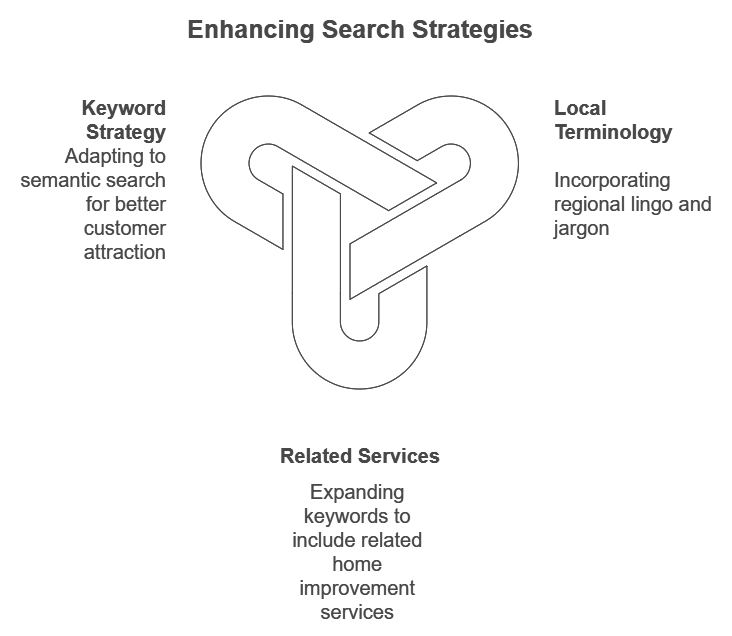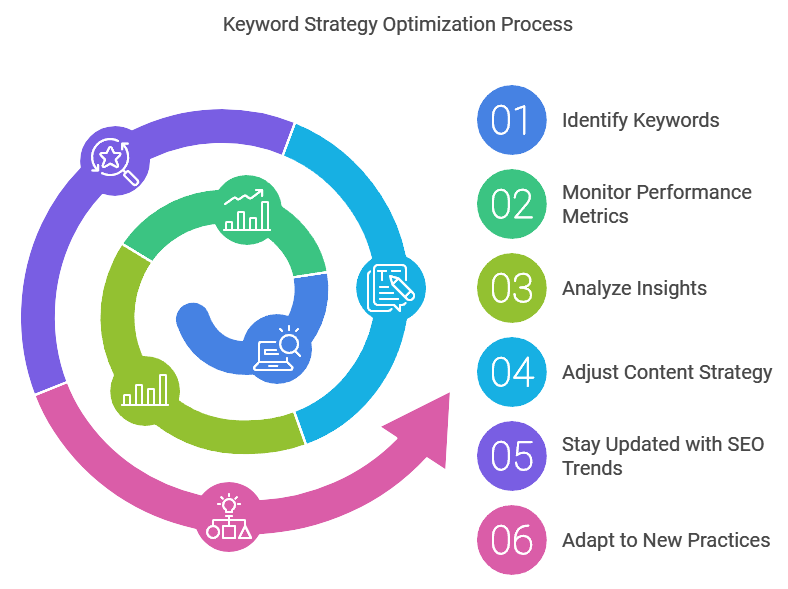Roofing businesses often find themselves competing in a saturated market where standing out online is a formidable challenge. While many roofers focus on general terms like “roof repair” or “roof installation,” there’s a wealth of untapped potential in less obvious keywords.
This article explores unconventional strategies to discover these hidden gems and optimize your roofing website for higher search rankings.
The Science of Synonyms and Semantic Search

Search engines have evolved to understand context and intent rather than just matching exact keywords. This shift towards semantic search means that varying your keyword strategy can yield significant benefits. Every region has its own lingo, and incorporating local terms and industry-specific jargon can help attract customers who use these phrases.
For instance, instead of “roof shingles,” consider “roof slates” or “roof tiles” if that’s common in your area. Researching local forums and community groups can provide insights into colloquial terms related to roofing.
In addition to local terminology, think beyond roofing and consider related services that customers might search for. Keywords like “home insulation,” “attic ventilation,” or “gutter installation” can attract a broader audience looking for comprehensive home improvement solutions.
By creating content that ties roofing services to these related areas, you can position your business as a one-stop shop for homeowners.
Leveraging Long-Tail Keywords for Specific Customer Needs
Long-tail keywords are longer, more specific phrases that visitors are more likely to use when they’re closer to making a purchase. Identifying the specific problems your potential customers face and addressing them directly can be a powerful way to connect with them. For example, addressing a query like “How to fix a leaking flat roof during heavy rain” can attract customers seeking immediate solutions.
Tools like AnswerThePublic or Google’s People Also Ask can help you discover these queries.
Incorporating Questions and Conversational Phrases
With the rise of voice search, more people are using conversational phrases.
- Example: “What’s the best roofing material for snowy climates?”
- Action Point: Write blog posts or FAQs addressing these questions.

Unveiling Hidden Opportunities with Competitor Analysis
Studying your competitors can reveal keywords you might have overlooked. Use SEO tools to discover which keywords are driving traffic to your competitors and identify content gaps they haven’t covered extensively. For example, if a competitor ranks high for “eco-friendly roofing options,” consider creating content around that topic. Conversely, few competitors might have content on “roofing maintenance tips for historic homes,” presenting an opportunity to fill these gaps with comprehensive content.
- Action Point: Tools like SEMrush or Ahrefs can provide insights into competitor keywords.
- Action Point: Fill these gaps with comprehensive content.
Embracing Seasonal and Event-Based Keywords
Roofing needs can be seasonal, and aligning your content with these patterns can boost relevance. Creating content around weather-related roofing concerns, such as “Preparing Your Roof for Hurricane Season,” can make your site more relevant to seasonal search patterns. Similarly, tying your content to local events that might impact roofing needs can be effective.
For instance, a piece titled “Roof Inspection After the [Local Festival] Fireworks” can capitalize on heightened interest following community events. By scheduling content releases ahead of these changes, you can position your site to capture increased search traffic.
- Action Point: Schedule content releases ahead of seasonal changes.
- Action Point: Stay updated with community events and create timely content.
Integrating Multimedia Content for Enhanced SEO
Search engines favor websites that offer diverse content types. Optimizing images and videos with descriptive metadata can enhance your site’s visibility. For example, an instructional video titled “Installing Solar Panels on Tile Roofs” with detailed descriptions can draw in a niche audience. Using keyword-rich alt text for images and transcripts for videos can further boost your content’s search performance. Additionally, developing interactive tools like a “Roof Replacement Cost Calculator for [Your City]” can engage users and encourage them to spend more time on your site, improving SEO metrics.
- Action Point: Use keyword-rich alt text for images and transcripts for videos.
- Action Point: Promote these tools through targeted keywords.
Engaging with Community and Social Keywords
Community involvement can generate unique keywords and boost local SEO. Participating in local forums and groups allows you to engage with potential customers where they ask questions, such as answering roofing concerns on local subreddits or community boards. Encouraging user-generated content, like testimonials or guest blog posts from customers about their roofing projects, can also enhance your site’s credibility and appeal.
By creating opportunities for customers to share their experiences, you not only enrich your content but also foster a sense of community around your brand.
- Action Point: Identify popular platforms in your area and participate actively.
- Action Point: Create opportunities for customers to share their experiences.
Case Study Highlight
Pearland Roofing Company exemplifies effective keyword strategy by focusing on both common and unconventional terms. They’ve tapped into localized keywords and addressed specific customer inquiries, resulting in higher rankings and increased visibility in their service areas. By employing a diverse range of strategies—such as local terminology, problem-solving queries, and multimedia content—they have successfully enhanced their online presence and solidified their market position.
Measuring and Adapting Your Keyword Strategy

Continuous improvement is key to staying ahead in SEO. Regularly monitoring performance metrics allows you to see which keywords are performing and which aren’t. Using tools like Google Analytics to track organic search traffic and engagement metrics, you can adjust your content strategy based on these insights. Furthermore, staying updated with SEO trends is crucial as search engine algorithms and user behaviors change over time. For example, the growing importance of mobile search and site speed requires ongoing adaptation to new SEO practices.
- Action Point: Adjust your content strategy based on these insights.
- Action Point: Keep learning and adapting to new SEO practices.
Conclusion
Unlocking the full potential of keyword research requires creativity and a willingness to explore beyond the obvious. By incorporating these unconventional strategies, roofing businesses can unearth hidden terms that not only boost search rankings but also resonate more deeply with their target audience. Embrace this keyword alchemy to transform your roofing company’s online presence and outshine the competition.




